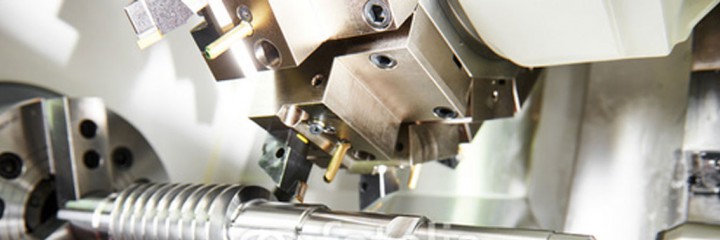TEST2
Pantoprazole injection pantoprazole for ulcer
The mean ratio of the AUC0-144 hrs in skin blister fluid/AUC0-144 hrs in plasma is 0.60 (range 0.44 to 0.64). Adult patients with ABSSSI were enrolled in a Phase 3, double-blind, clinical trial. Stopping or slowing the infusion may result in cessation of these reactions. Table 2 lists selected adverse reactions occurring in 2% or more of patients treated with DALVANCE in Phase 2/3 clinical trials. In a Phase 3 trial comparing DALVANCE single and two-dose regimens, serious adverse reactions occurred in 7/349 (2.0%) of patients in the DALVANCE single dose group and 5/346 (1.4%) of patients in the DALVANCE two-dose group. There were 3 patients in the two-dose group who did not receive treatment and were counted as non-responders. The 95% CI is computed using the Miettinen and Nurminen approach, stratified by baseline fever status. Copy the URL below and paste it into your RSS Reader application. Neither dalbavancin 1000 mg nor dalbavancin 1500 mg had any clinically relevant adverse effect on cardiac repolarization. The expected median maximum plasma concentrations (Cmax) of dalbavancin for pediatric patient age groups ranged between approximately 53% to 73% of that in adult patients (Cmax, mittel gegen verdickte fußnägel 412 mg/L). In a rat prenatal and postnatal development study, increased embryo lethality and increased offspring deaths during the first week post-partum were observed at a dose of 45 mg/kg/day (3.5 times the human dose on an exposure basis). No dosage adjustment is recommended for patients with mild hepatic impairment. Patients should be counseled that antibacterial drugs including DALVANCE should only be used to treat bacterial infections. In addition, renal toxicity characterized by increases in serum BUN and creatinine and microscopic kidney findings was observed in rats and dogs at doses 5 to 7 times the expected human dose on an exposure basis. Hypertoxin-producing strains of C. Clinically significant age-related differences in dalbavancin pharmacokinetics have not been observed in patients with infections. Dalbavancin is an antibacterial drug [see Microbiology (12.4)].
Pantoprazole drug interactions
The antibacterial activity of dalbavancin appears to best correlate with the ratio of area under the concentration-time curve to minimal inhibitory concentration (AUC/MIC) for Staphylococcus aureus based on animal models of infection. Table 10 shows outcomes in patients with an identified baseline pathogen from Trial 3 in the microbiological ITT (microITT) population. Although no information is available specifically regarding the use of hemodialysis to treat overdose, in a Phase 1 study in patients with renal impairment less than 6% of the recommended dalbavancin dose was removed [see Clinical Pharmacology (12.3)]. Table 6 summarizes the findings for this endpoint in these two ABSSSI trials. In patients, 3 months of age or older in the mITT population, the clinical cure rate at the test of cure (TOC) visit (28 ± 2 days) was 94.7% (71/75) in the DALVANCE single-dose arm, 92.3% (72/78) in the DALVANCE two-dose arm and 100% (30/30) in the comparator arm. Patients were randomized in a 3:3:1 ratio to receive either DALVANCE single-dose regimen, DALVANCE two-dose regimen, or comparator. There were 2 patients in the DALVANCE arm with methicillin-susceptible S. Patients who died, used non-study antibacterial therapy, or had an unplanned surgical intervention 72 hours after the start of therapy were classified as Clinical Failures. Together, they worked to better understand the novel virus. The trial was not powered for a comparative inferential efficacy analysis. To reduce the development of drug-resistant bacteria and maintain the effectiveness of DALVANCE and other antibacterial drugs, DALVANCE should be used only to treat or prevent infections that are proven or strongly suspected to be caused by susceptible bacteria. The pharmacokinetics of DALVANCE was not significantly altered with age; therefore, no dosage adjustment is necessary based on age alone. DALVANCE (dalbavancin) for injection should be stored at 25ºC (77ºF); excursions permitted to 15 to 30ºC (59 to 86ºF) [see USP Controlled Room Temperature]. DALVANCE (dalbavancin) for injection must be reconstituted with either Sterile Water for Injection, USP, or 5% Dextrose Injection, USP, and subsequently diluted only with 5% Dextrose Injection, USP, to a final concentration of 1 mg/mL to 5 mg/mL. In healthy subjects, dalbavancin AUC0-24h and Cmax both increased proportionally to dose following single IV dalbavancin doses ranging from 140 mg to 1500 mg, indicating linear pharmacokinetics. C. difficile produces toxins A and B which contribute to the development of CDAD. No clinically important differences in drug exposure between pediatric age groups (including preterm neonates) and adults are expected following administration of the age-dependent recommended single dose of DALVANCE.
Hyaluronic acid injection
Treatment with antibacterial agents can alter the normal flora of the colon, axis and allies pc and may permit overgrowth of C. Aseptically transfer the required dose of reconstituted DALVANCE solution, based on the child’s weight, from the vial(s) to an intravenous bag or bottle containing 5% Dextrose Injection, USP. If CDAD is suspected or confirmed, ongoing antibacterial use not directed against C. Additional 5 patients from birth to < 3 months of age were enrolled and assigned to the DALVANCE single-dose regimen. The mean AUC0-336 hrs was unchanged in subjects with mild hepatic impairment compared to subjects with normal hepatic function; however, chrombügel lösung the mean AUC0-336 hrs decreased 28% and 31% in subjects with moderate and severe hepatic impairment respectively, compared to subjects with normal hepatic function. Treatment of overdose with DALVANCE should consist of observation and general supportive measures. The clinical significance of these in vitro findings is unknown. The estimated background risk of major birth defects and miscarriage for the indicated population is unknown. The mean age was 50 years and the mean body mass index was 29.1 kg/m2. The plasma protein binding of dalbavancin is approximately 93% and is not altered as a function of drug concentration, renal impairment, or hepatic impairment. Table 5 summarizes overall clinical response rates in these two ABSSSI trials using the pre-specified primary efficacy endpoint in the ITT population. Patients treated with DALVANCE were predominantly male (59.5%) and White (81.2%). The site is secure. The https:// ensures that you are connecting to the official website and that any information you provide is encrypted and transmitted securely. Serious adverse reactions (SARs) occurred in 3/161 (1.9%) of patients treated with DALVANCE, all in the single-dose arm.
Is pantoprazole a ppi
Hepatocellular necrosis was observed in dogs dosed at ≥10 mg/kg/day for longer than 2 months, i.e., at approximately 5 to 7 times the expected human dose on an exposure basis. Treatment of pregnant rats with dalbavancin at 3.5 times the human dose on an exposure basis during early embryonic development and from implantation to the end of lactation resulted in delayed fetal maturation and increased fetal loss, saw palmetto anti androgen respectively [see Data]. S. anginosus group, fluconazole 100 mg tablet and 1 E. faecalis. Following a single dose of 500 mg or 1000 mg dalbavancin, the mean plasma clearance (CLT) was reduced 11%, 35%, and 47% in subjects with CLcr 50 to 79 mL/min, CLcr 30 to 49 mL/min, and CLcr less than 30 mL/min, respectively, compared to subjects with normal renal function. DALVANCE was discontinued due to an adverse reaction in 64/2473 (2.6%) patients treated with any regimen of DALVANCE. In Trials 1, 2, and 3, all patients had blood cultures obtained at baseline. The predominant pathogen at baseline was Staphylococcus aureus (84%). We’re turning advanced science and technologies into therapies that matter most.






